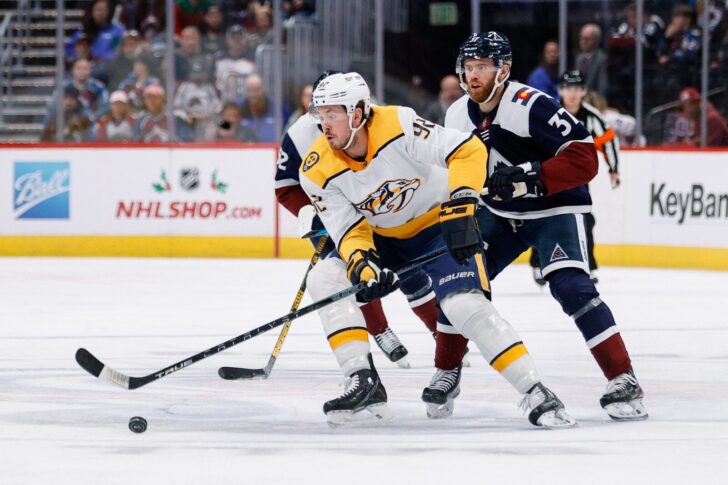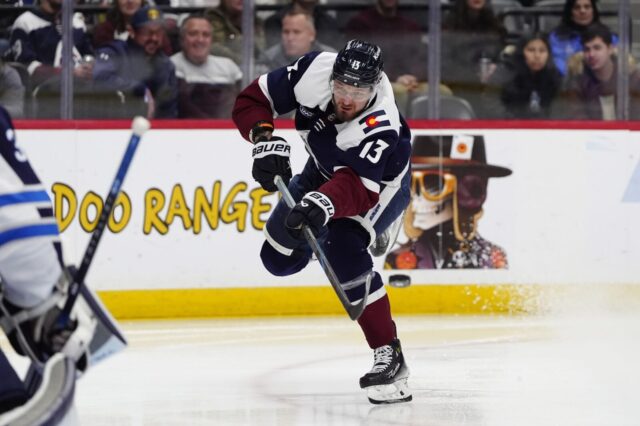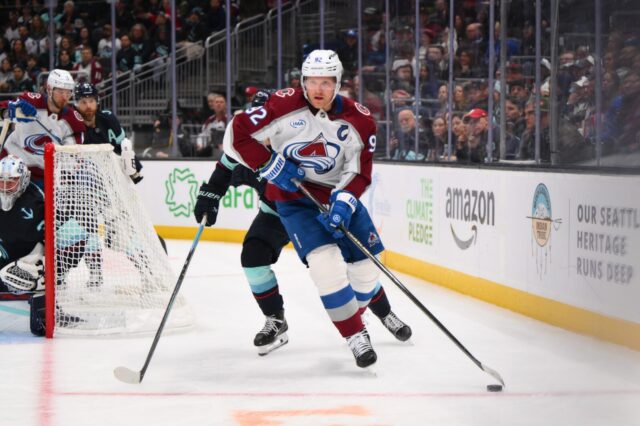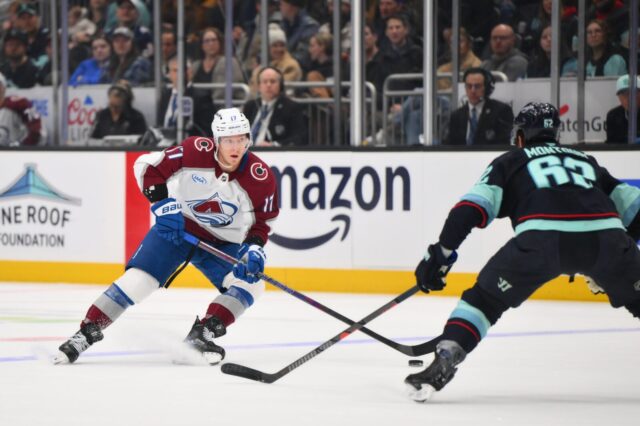Ryan Johansen might not be a perfect player. But it’s a near-perfect move by general manager Chris MacFarland in the sense that Colorado didn’t need to move out any assets to acquire him. Already low on trade pieces, the Avs needed a second-line center but didn’t have much to give up to get one. For weeks, I’ve been on the Ryan O’Reilly train simply because it would’ve been a UFA signing where the only asset being moved out is cap space.
But MacFarland found a way to take a gamble on a worthy candidate to fill the 2C hole. And he did it by giving up a pending unrestricted free agent in Alex Galchenyuk that had no future in Colorado. It’s as if the Avs signed Johansen to a two-year deal worth $8 million. And his upside could match or surpass that of O’Reilly’s, without the bidding war and longer-term likely needed to obtain O’Reilly’s services (if he even wanted to come back).
Johansen, who was drafted No. 4 overall by the Columbus Blue Jackets in 2010, has familiarity with both MacFarland and head coach Jared Bednar. MacFarland was the assistant GM for Columbus in 2010 when they selected Johansen. And Bednar later became his assistant coach during the 2012-13 season with Springfield of the AHL.
Even with that familiarity, Johansen is a risk. And that shouldn’t be overlooked. In fact, there are several factors that could lead to Johansen’s time in Denver being a bust. But it’s a risk worth taking. If his production bounces back in 2023-24, Colorado will have secured a 2C for the 2024-25 season for just $4 million. And that’s the season the salary cap is expected to jump to at least $88 million. But if things completely fall off the rails, Colorado could try to find a way to move him with salary retention. Or a low-cost buyout could also be an option. But I’m confident it won’t get to that point. At worst, he could be converted to a third-line center making $4 million.
Health is also something to take into account. It’s probably one of the bigger reasons why this move could fail. Johansen isn’t just bouncing back from a poor season, he’s recovering from an injury that cut his season short in February. Johansen was hurt in a game against the Vancouver Canucks after a skate blade caught his lower leg. He quickly had to undergo surgery on his right leg and hasn’t played since.
“The type of injury that he has probably has a little more time to it, to getting to a place where he’s gonna need to get to so he can be a contributing player,” incoming Predators GM Barry Trotz told local reporters in April. “Joey’s gonna have to have his best summer.”
Trotz also went on to talk about Johansen needing to find his role within the team at that season-ending press conference. He touched on Johansen being a step behind today’s NHL in terms of speed and needing to really focus on summer training to get that half a second back in order to define his role. Given the pace the Avalanche play with, this is also something to keep an eye on. Johansen’s initial injury timeline was 12 weeks, which was reached sometime in May. He’s already well into his summer training.
With the trade to Colorado, Johansen doesn’t need to focus on what his role will be as much as how he could recover successfully. The Avs needed a 2C, and they were very clear about Johansen being their guy.
“Ryan is a talented, veteran center who helps our top six,” general manager Chris MacFarland said in a release. “He gives us size in the middle of the ice and brings leadership and experience to our roster. We look forward to adding him to our team.”
Johansen’s best years came quickly after Columbus shipped him off to Nashville during the 2015-16 season. The very next year, he helped the Preds reach the Stanley Cup Final as their No. 1 center. You could argue that Nashville could’ve won the Cup had it not been for Johansen’s injury during the Western Conference Final. It’s no surprise that the Preds had their best years in those first seasons with Johansen when he was at the top of his game.
But he’s also just 30 years old and will be 31 when next season begins. With a chip on his shoulder to prove the naysayers wrong, and at that age, it’s very reminiscent of what the Avs had in Nazem Kadri entering the 2021-22 season. Kadri, too, was coming off a poor season and was handed the reigns to the No. 2 center role for another year. As long as health isn’t a factor, Johansen’s bounce back could somewhat mirror that of Kadri’s. Even 60 points from Johansen would be a success, not necessarily the outlier breakout Kadri had.
Johansen has been one of the better centers in the faceoff circle since entering the league. And it’s another part of his game that will largely help the Avs. He has a career 53.4 percent success rate in draws. Last season was his best, winning 59.1 percent of faceoffs, though he averaged just 15-per-game — a career low. But that’s largely because of his reduced role in 2022-23, where his average time on ice dipped to 15:46 per game. In 2021-22, he averaged 16:34.
Given the ice time up for grabs at the center position, it’s safe to say Johansen will likely see his TOI rise back over 16 minutes. It could even reach 17 or 18 minutes, too. Last season, J.T. Compher averaged 20:32 as the 2C.
For this new marriage to work, Johansen is going to have to manage a way to fit in despite not being as quick on his feet. And he’ll have to juggle that with a bounce back both offensively and in terms of health. But the Avs clearly saw something in him that was worth taking a gamble on. This team has hit on trades like this in recent history. But you could argue none are bigger than this one. They badly need a 2C, and they desperately need top-six help without captain Gabriel Landeskog for another year.
Johansen is their guy. The rest is up to him.



